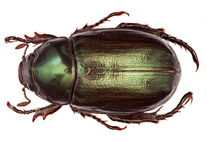Abstract
The biodiversity of Culicoides from eastern Slovakia was investigated by light trapping. An integrative taxonomy approach combining DNA barcode sequence and morphological analyses was used to accurately identify specimens. Five species were newly recorded from Slovakia: Culicoides picturatus Kremer & Deduit, C. gejgelensis Dzhafarov, C. clastrieri Callot et al., C. griseidorsum Kieffer and C. odiatus Austen. The checklist of the Culicoides species recorded from SK has been updated to 63 species and barcode sequence data is provided for 8 species not previously available on GenBank. Conflict between results from molecular and morphological analyses resulted in the discovery of some potentially new cryptic species and the inability of DNA barcodes to distinguish C. festivipennis Kieffer from C. clastrieri, C. salinarius Kieffer from C. manchuriensis Tokunaga and C. pallidicornis Kieffer from C. subfasciipennis Kieffer. These conflicts suggest further study is required to clarify the status of these species.

